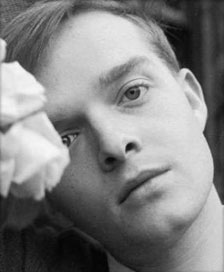Capote gives the party of the decade at Manhattan’s Plaza Hotel (Nov. 28).
1967
Movie of In Cold Blood released (December).
1970
In Palm Springs (winter and spring); says his new novel, Answered Prayers, is half finished.
1975
First chapter of Answered Prayers, “La Côte Basque, 1965,” published in Esquire (October). Furious to see themselves as thinly disguised characters, his rich friends turn against him.
In Los Angeles to appear in the film version of the Neil Simon comedy Murder by Death (November).
1976
Murder by Death is released (June).
1980
Music for Chameleons, a collection of fiction and nonfiction pieces, is published. It is his last book.
1981
Capote’s father, Arch Persons, dies (June 7).
1984
Suffers two bad falls and is treated for phlebitis, a potentially fatal illness (winter).
Dies in Los Angeles (Aug. 25), just a month shy of his sixtieth birthday.
Acknowledgments
Truman Capote’s letters can be found in libraries and personal collections throughout the United States and Britain. The largest collection is housed in the New York Public Library, which has Capote’s letters to Alvin and Marie Dewey; to Andrew Lyndon, one of Capote’s best friends; to Catherine Wood, his high school teacher; and to William Shawn, his editor at The New Yorker. It also has some letters to Capote’s father, Arch Persons; to his longtime companion, Jack Dunphy; and to Elizabeth Ames, the director of Yaddo, the artists’ and writers’ retreat in upstate New York. I thank the librarians at the Fifth Avenue library who so kindly provided copies of those many letters.
Another large Capote collection can also be found in New York City, and I want to thank the helpful librarians at the Columbia University Library, which has the Random House collection. In that collection are Capote’s letters to his longtime editor, Robert Linscott, and to Bennett Cerf, co-founder of Random House. Capote’s letters to Leo Lerman will eventually go to Columbia. I thank Stephen Pascal, who is cataloging Lerman’s papers, for allowing me an early look at them.
The Beinecke Library at Yale has Capote’s dozens of letters to Donald Windham, and the University of Delaware Library has his correspondence with John Malcolm Brinnin. Both Windham and Brinnin were close to Capote for many years, and I appreciate the attention both libraries gave to my requests. Another important Capote collection—his letters to Cecil Beaton—is in the library of St. John’s College, Cambridge University; I appreciate the help of Jonathan Harrison, that college’s librarian.
Smaller collections can be found at the University of Texas at Austin, Smith College (Capote’s letters to Newton Arvin), Duke University, Radcliffe College, Washington University in St. Louis, and the Henry E. Huntington Library in California. I wrote or called librarians at many other institutions to determine if they had letters I could include. There were several dozen, and I hope they will excuse me if I do not list each one. All were helpful, and I stand in debt to several score librarians, all members of a much underappreciated profession.
Letters can also be found in private collections. The family of Mary Louise Aswell let me see Capote’s many letters to her. The late Katharine Graham gave me copies of her letters, and so did Richard Avedon, Pearl Kazin Bell, Donald Cullivan, Peter Geyer, Waldemar Hansen and Kenneth Silverman. Others pointed out possible sources or helped in one way or another: Spyros Andreopoulos, Steven M. L. Aronson, Caroline Brass, Jane Brien, Joy and Michael Brown, William Buckley, Karen Cook, Anthony Crawford, David Farneth, William Grace, Kate Guyonvarch, Greg Johnson, William Miglore, Norman Mailer, Matt Rhodes, Jeffrey Smalldon, Annette Tapert and Hugo Vickers.
I have edited this book in collaboration with the Truman Capote estate, which is overseen by Capote’s executor, Alan U. Schwartz, and I extend my thanks to him as well. He gave support without interference, and no editor could ask for more. Though I have benefited from the always wise counsel of my own Random House editor, Robert Loomis, the responsibility for deciding which letters to include, and which to leave out, is mine. I am also grateful for the behind-the-scene support of many members of the Random House team, including Dana Isaacson, Casey Reivich, Laura Goldin and Vincent La Scala. As always, thanks go to Helen Brann, my agent, who put together my part in this complicated project.
My final thanks must go to three who labored mightily to present this book. Steven Varni helped in the initial stages, contacting libraries and helping to trace collections of letters. Barbara Shalvey typed hundreds of letters, picking through Capote’s sometimes difficult handwriting; she also did the research for many footnotes. Edmond Miller also typed hundreds of letters and performed many other vital tasks; like a good detective, he had an uncanny ability to find out information about even the most obscure people mentioned in the letters. My thanks go to all three.
The End
